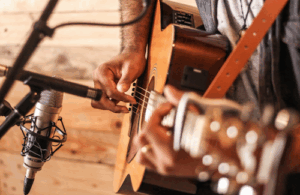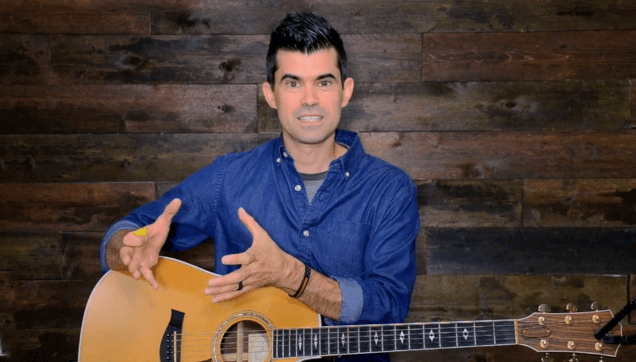Don’t Have a Guitar? No Problem.
For acoustic guitars, there are a few things to consider when buying a guitar, and it mainly depends on your budget.
New Guitars
I think of new acoustic guitars in terms of price tier. Each tier unlocks different options in a guitar.
$100 or less — this tier of guitar is a beginner guitar and not really built to last. They will get you going and are appropriate if you want to just see if guitar is something you want to pursue without spending too much money. You may run in to intonation problems (pitch problems as you play), but there are some decent ones out there. I recommend a Jazmine S35 guitar in this range.
$200-$300 This is still a beginner guitar range, but you can start to unlock a better quality guitar and some other “goodies” that will come in handy. If you can’t spend more than $200, go with the Fender FA-115. If you can spend $250, the go with the Fender CD-60s since it is a solid top. Solid top guitars will last longer and sound better, verses a laminate top. Fender DG8s are also good solid top finds in this range.
$300-$700 This range will unlock better sounding mid-range guitars as well as guitars with electronics built in, in case you want to play through a sound system or an amp. I’d look for a used Taylor guitar in this range. Seagull guitars sound great unplugged, and if you want solid electronics, I’d recommend looking at different Takamine guitars. You can also some good Washburn guitars in this range. As you browse, just read through some of the reviews to spot the pros and cons.
$1,000 – Either side of $1k is the lower end of more professional guitars. In this range you could look for Takamines, Taylors, Martins, or Gibsons. You may still find better bang for you buck with a used guitar in this range, but you have to know what you’re looking for.
$2,000+ For this range, I would recommend a Talyor model ending in 10 (which is the standard dreadnought shape); however, I’m not a fan of the “expression system” electronics that comes installed on many of the models. I mainly use a 710 and an 810. The Gibson J45 with an LR Baggs pickup system is the standard of a lot of touring pros. Obviously in this price range there are all kinds of specialty options. The best advise here is to play as many as you can and fall in love with one!
Used Guitars
You can obviously get good deals on used guitars, but you have to know what to look for. Since you’re new to guitar, you may want to take a friend with you, but here are the things I look for when buying a used one:
You’ll want to check the “action” of the guitar, which is the distance of the strings to the fretboard. A guitar shop can “set-up” a guitar to minimize that distance, while also minimizing a buzzing sound. This is one of the first things I check.
The second thing to check is intonation, which is how consistent the pitch is, no matter where you fret a string. If the string starts going out of tune as you work your way up the neck, it’s normally a sign that the strings are old or the guitar isn’t great (or needs work).
You obviously want to check it over for any damage or wood separation. Take a special look at the top of the guitar at the sound hole and see if you can tell if several pieces of wood have been adhered together to make the top (laminate top), or if it is a solid piece of wood. A “solid top” guitar is better quality and will last longer.
What About Guitar Picks?
Picks have a lot to do with preference. My go-to pick is a Dunlop .73mm pick. It’s the perfect thickness for strumming, soloing, acoustic and electric. Thinner picks sound “tinny” to me, and thicker picks sound too aggressive. However, if I’m playing electric guitar, I might opt for a thicker pick, since you won’t really loose much tone and will have a little more control.
However, there’s not really a “right” or “wrong” here. As you find what works for you, just opt for a medium thickness pick. Sometimes you just need to grab what’s available and start playing.
Also, as a guitar player, you now know what that little pocket is for in blue jeans. It’s the perfect “pick pocket”, and now you’ll always be prepared to play!





